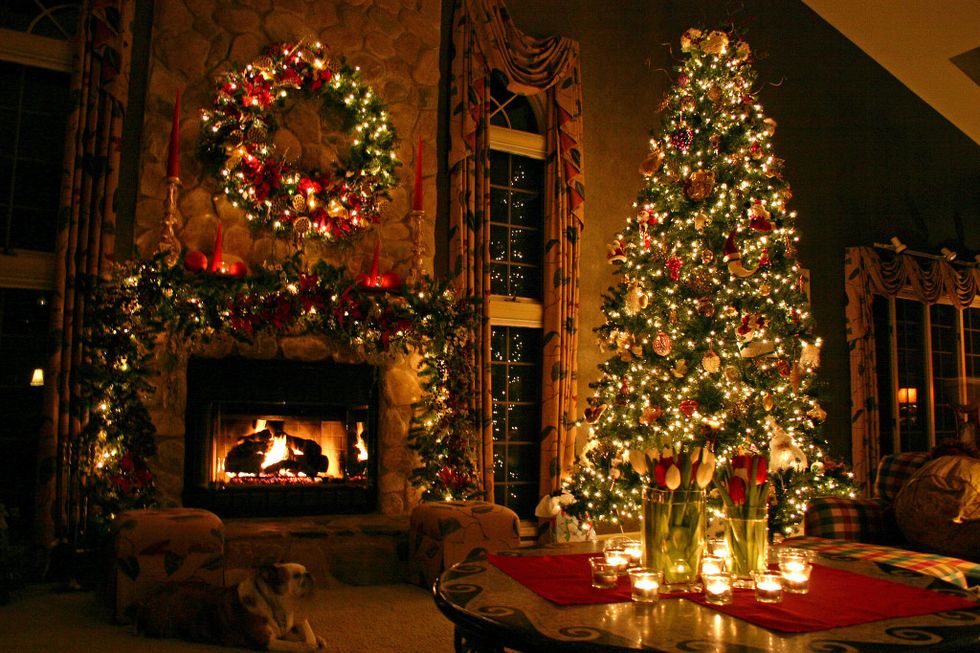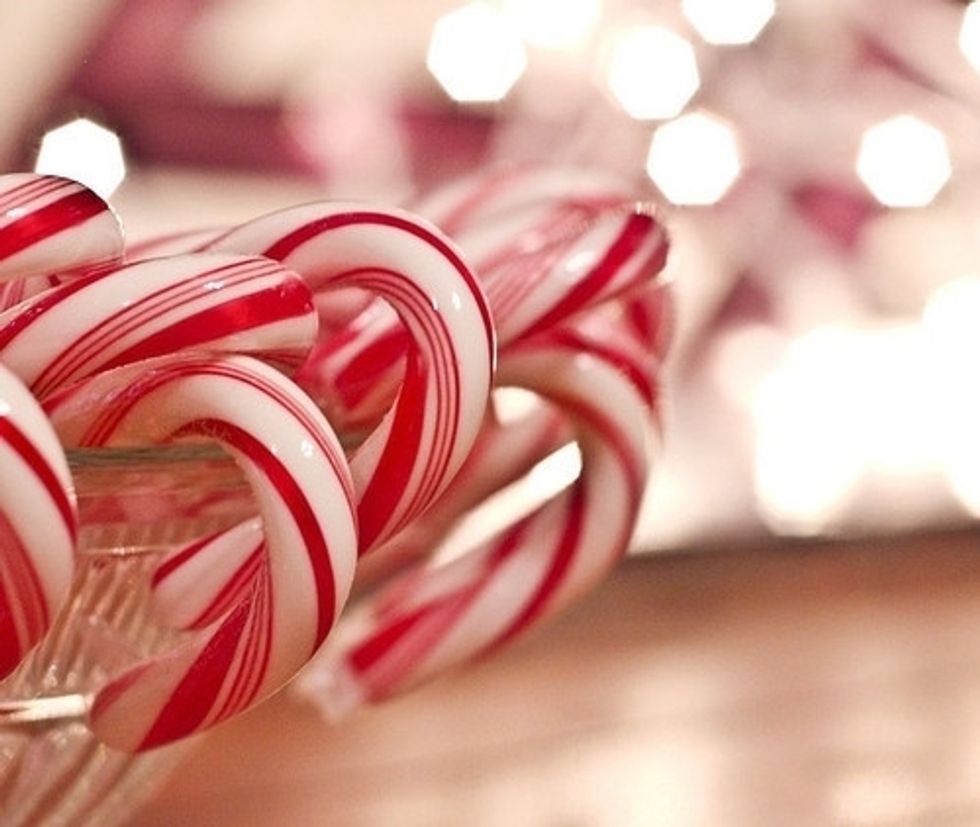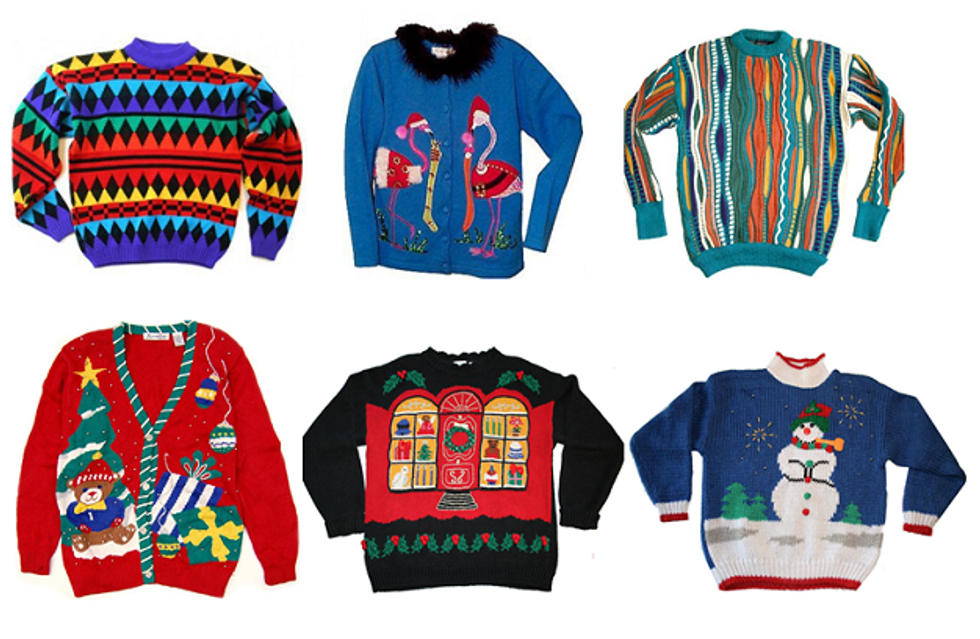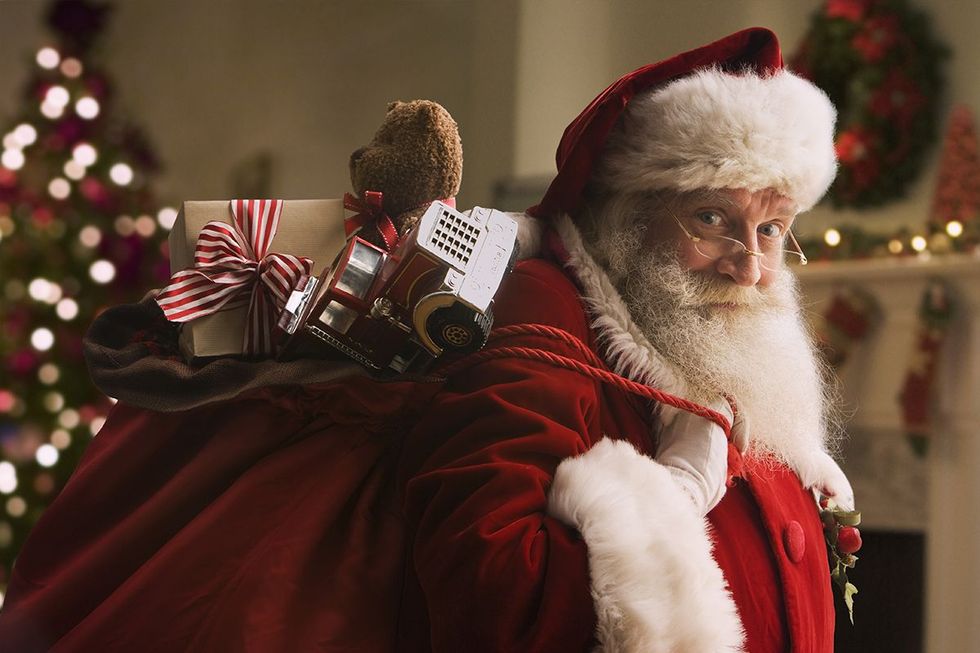In the festive and cheerful spirit of the holiday season, I decided to compile another list of origins [see my Halloween traditions article]. This time, it's Christmas edition.
We often associate Christmas with mistletoe, Santa Claus, gift-giving, Christmas trees, eggnog and so much more. But did you ever wonder how and why these traditions came to be? Okay, maybe you never actually wondered, but you're about to find out anyway! Feel free whip this knowledge out to impress any guest at the upcoming Christmas party.
Here is my handy-dandy list of eight major Christmas tradition origins:
1. Christmas Trees
The use of Christmas trees today is significantly different from its original purpose. Nowadays, we decorate fake and artificial trees with lights, ornaments, and ribbons. However, the original Christmas was real evergreen and was adorned with edibles, such as nuts and apples. For Christians, on Adam and Eve's name day (December 24th), they would decorate evergreen trees with apples to symbolize "Paradise Trees" in the Garden of Eden. Eventually, this tradition was incorporated into Christmas celebrations.
2. Mistletoe
Did you know that mistletoe is actually a parasitic plant? It hangs on a tree branch and soaks in nutrients from the trunk. This hardly sounds festive or romantic...but actually, mistletoe is associated with good luck, vitality, and fertility, which is why it's typically hung up in the house. Also, it's apparently efficient in scaring off evil spirits. The practice of kissing under the plant is unknown, but it became popular in 18th century England. According to Norse mythology, mistletoe is also a symbol of love and friendship, so that is most likely where the practice came from.
3. Stockings
The practice of stuffing stockings can be credited to Saint Nicholas, who is inspired the fictional character of Santa Claus. St. Nicholas was known for generously giving children gifts. One story claims that he put gold coins in the stockings of three poor sisters because their father was unable to pay their dowries. Upon hearing of this unfortunate situation, St. Nicholas had taken the initiative and threw three bags of gold coins down their chimney, and they coincidentally landed in the sisters' stockings that were left hanging to dry over the fireplace.
4. Candy canes
There are many variations of the candy cane, but the original candy cane was actually just straight white sugar sticks and came from Germany about 250 years ago. There is a myth that in 1670, a choir teacher was concerned about keeping his young students quiet during the long Christmas nativity scene. As a result, he gave them sugar sticks to eat in order to keep them quiet. In addition, they were in the shape of a 'J' like a shepherd's crook to remind the children of the shepherds who visited the baby Jesus when he was born.
5. Red and Green
For these fun festive colors, there was no event that declared red and green as the official colors of Christmas. The color red is associated with holly berries, which is also a religious symbol to represent the blood of Christ. As for green, it is associated with evergreens which have been used as decorations for thousands of years to bring life to buildings by brightening them up in the cold and harsh winter.
6. Gift giving
The origin of giving gifts for Christmas is pretty simple and concrete. It can date all the way back to the birth of Jesus, where the three wise men brought the baby Jesus presents: Gold, Myrrh, and Frankincense. And just in case you were curious, gold represents Jesus being the King of Kings since it was associated with royalty.
Myrrh was a perfume that was used on dead bodies to make them smell better, thus foreshadowing that Jesus would die to save the world. Finally, Frankincense was a fragrance used in Jewish worship and it showed that people would worship Jesus. Also, some people even think of Jesus being God's greatest gift to the world.
7. Ugly Christmas Sweaters
Compared to the others, ugly Christmas sweaters are a pretty recent tradition. Christmas sweaters decorated with lights, bows, gems, sequins, and patches used to be worn typically by teachers, grandmothers, and over-the-top parents. But ugly Christmas sweaters have reached mainstream media and most people participate in the craze every December (myself included). In fact, according to the Ugly Christmas Sweater Party Book (yes, it's a real thing), this particular trend most likely originated from a 2001 Christmas party in Vancouver.
8. Santa Claus
One of the most common questions that children ask their parents around this time of year..."Is Santa Claus real?" The answer that follows is either one of the biggest lies or one of the biggest disappointments of a child's life. But what if I told you that there is an honest answer that won't disappoint these young little ones?
Santa was actually based off of a real person. As I mentioned earlier, St. Nicholas was the original and true inspiration for Santa Claus. Because his parents died at a young age, he was left with a lot of money and used his wealth to give secret gifts to the less fortunate. Add in some other Christmas figures, reformation, new legends/myths, and St. Nick eventually evolved into Santa. (Side note: Coca-Cola did NOT create Santa Claus).
Happy Holidays, everyone! Stay festive and may Santa bring you what you wished for this Christmas season.




























